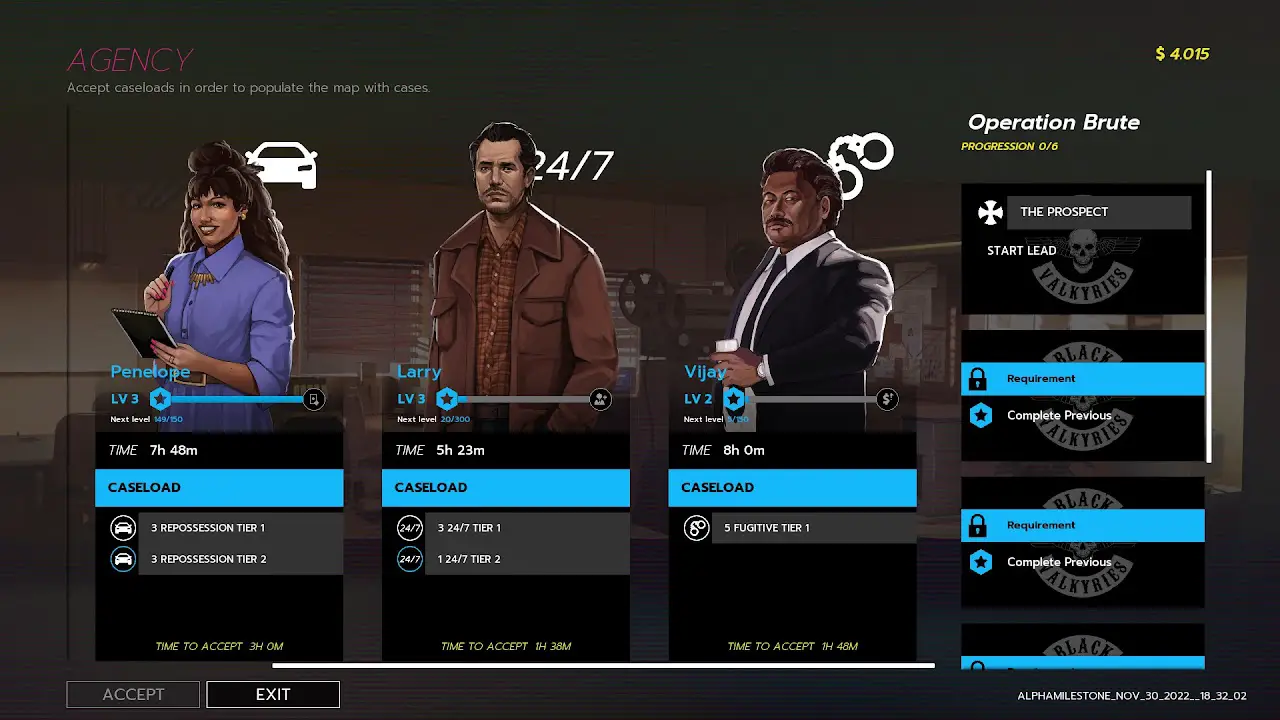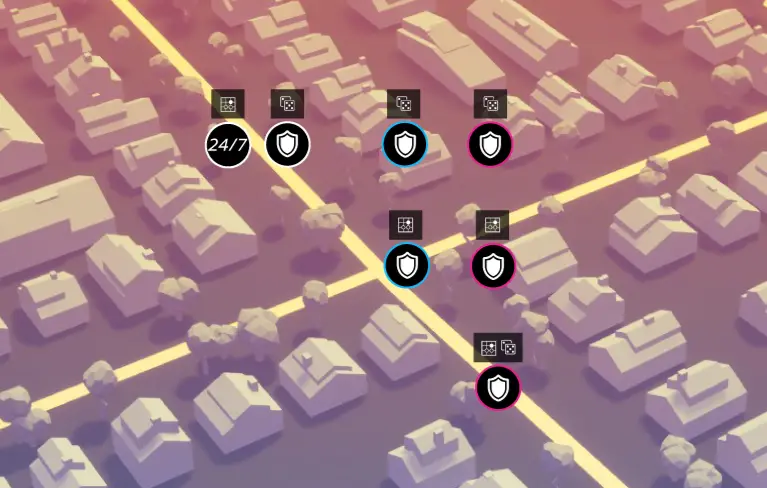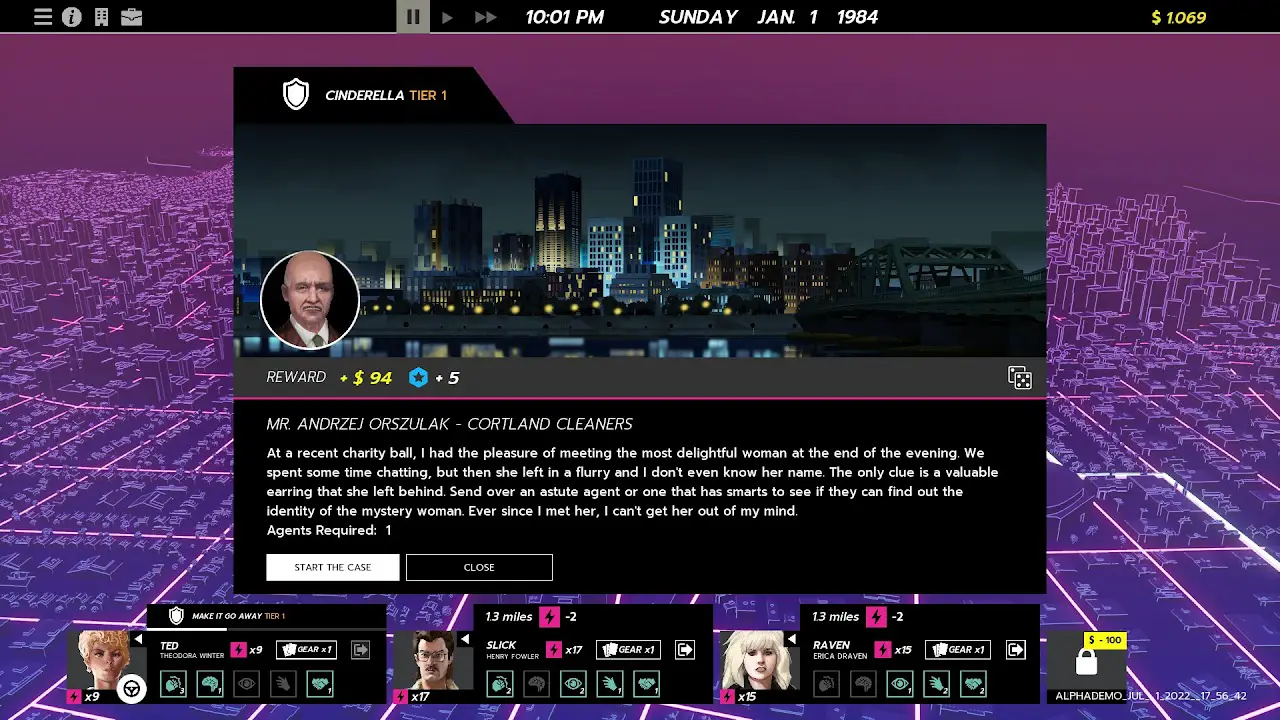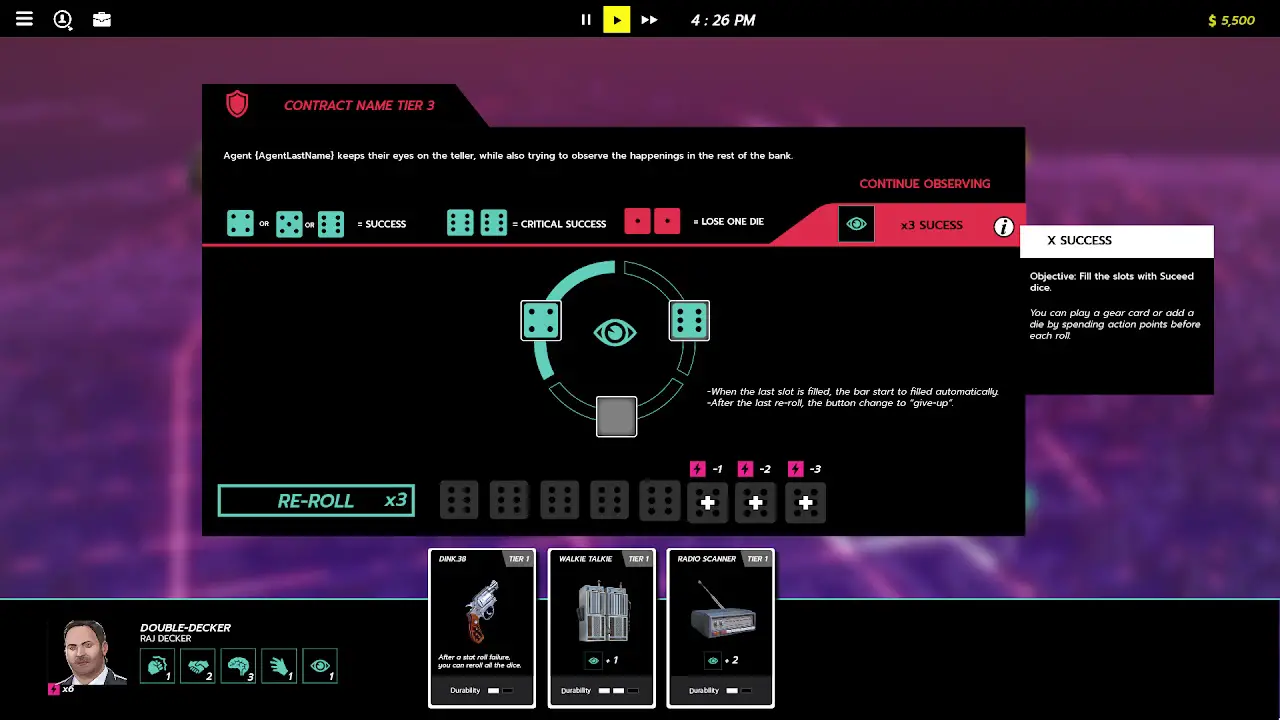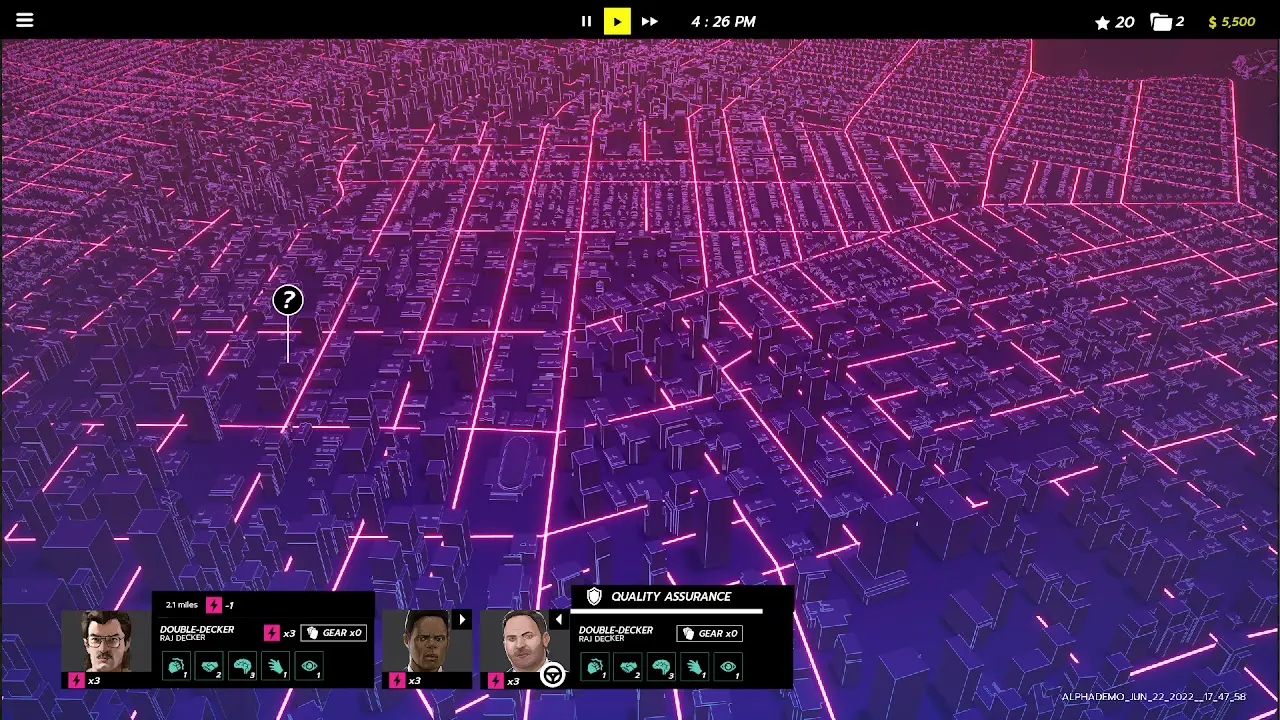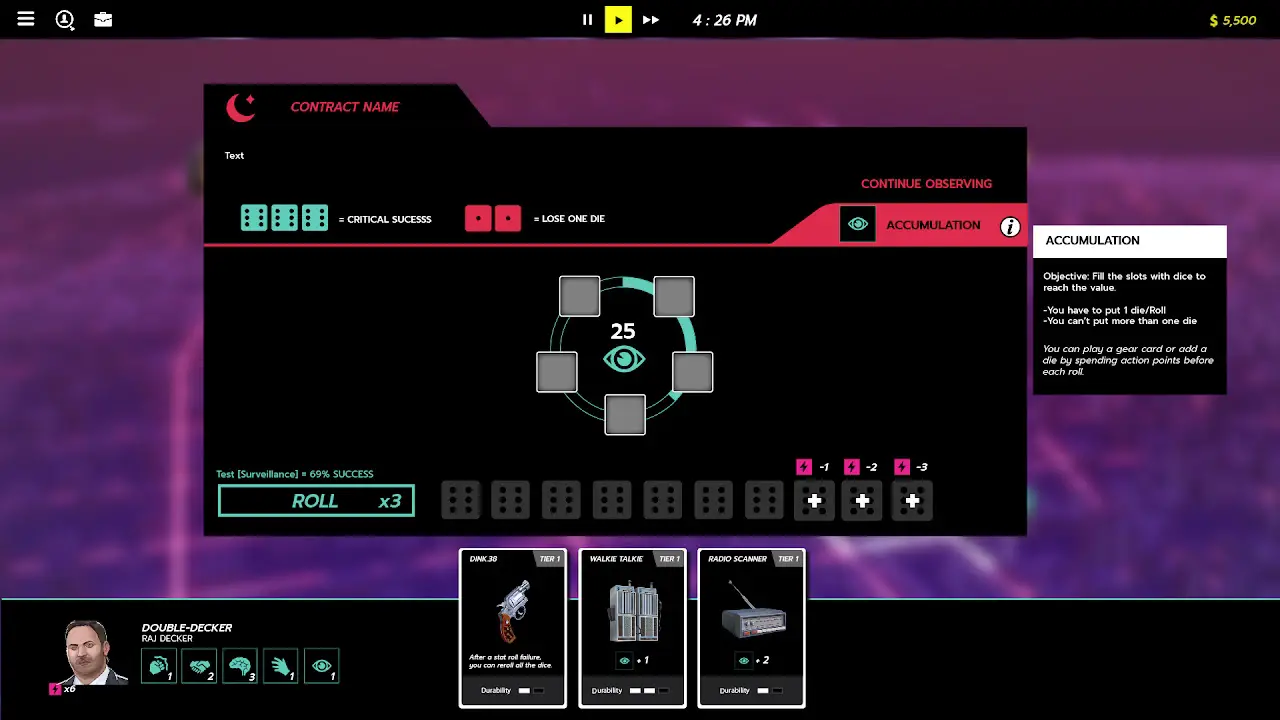These missions, referred to as “cases,” contribute to the dynamic map of Seneca City by introducing a range of objectives, tasks, and engaging storylines. Each case presents a unique challenge, putting the player’s decision-making skills to the test. These challenges require timely and informed choices to be made.
Cases are grouped together in bundles known as “caseloads,” which consist of multiple individual cases. These caseloads are offered by case officers who specialize in specific case types.
In the general mechanics of a case, attentive reading is crucial. By carefully examining the details provided, players can gain an advantage and make informed decisions. Clues within the case will guide players in determining which statistics will be most valuable for their agent. As the case progresses, challenges will arise that align with the agent’s stats. In sommige gevallen, gear cards may also be utilized to supplement the agent’s capabilities.
Accepting cases incurs a deduction of Action Points from the agent. The total number of Action Points required is determined by the distance between the selected agent and the case location.
Once a case is opened, the agent roster becomes visible at the bottom of the screen. This roster displays the stats of each agent, allowing players to assess which agent is best suited for the specific case requirements.
Case Officers
Momenteel, there are four available case officers in the game, each specializing in a specific type of case:
- Hank: Specializes in Security cases.
- Larry: Specializes in 24/7 cases.
- Penny: Specializes in Repossession cases.
- Vijay: Specializes in Fugitive Recovery cases.
Case officers have the ability to level up based on the completion of caseloads. By successfully completing caseloads assigned by case officers, their level can increase or decrease. This leveling system introduces additional agency-wide bonuses.
The specific bonuses obtained upon leveling up differ for each case officer and can also vary depending on the officer’s current level. These bonuses contribute to the overall enhancement of the agency’s performance and capabilities.
Lagen
Contracts are classified into three tiers of difficulty, each represented by a specific color. The first tier, denoted by white, indicates the lowest difficulty level. The second tier, represented by blue, signifies a moderate level of difficulty. Ten slotte, the third tier, depicted in red, represents the highest level of difficulty. As the tier increases, so does the challenge involved, but it also brings forth greater potential rewards.
Clients
Every case is accompanied by a client or a “quest giver” who provides detailed information about the case’s specifics.
Informants
Informant icons have the potential to appear during the daytime, presenting valuable information. Echter, once the first hour of the night sets in, these informant icons vanish.
To unlock a Moonlighting case, the player is required to make a payment to the informant.
Once the payment is made, the case becomes accessible for reading, but the player cannot initiate it until nighttime.
Once the first hour of the night arrives, the player can commence the contracted mission.
If the night contract remains unaccepted by the first hour of the day, it will disappear from the available options.
Beveiliging
Security cases primarily revolve around the protection and safeguarding of objects or individuals.
The dice roll mechanism utilized for security cases is commonly known as “4 & Omhoog”.
In wezen, this indicates that a roll of 4, 5, of 6 on the dice is necessary to achieve a successful outcome.
24/7
This particular type of contract emphasizes puzzle-solving. While it may not offer the same level of financial rewards as other case types, it presents an excellent opportunity for training, as puzzles are also encountered in various other cases.
Each puzzle within this contract type possesses its own distinctive characteristics. Some puzzles rely on logical reasoning, while others demand quick reflexes and agility.
Puzzle challenges are organized into tiers, meaning that a tier 3 case will include a tier 3 puzzel. As the tier increases, the difficulty of the puzzle intensifies.
For those seeking a genuine test of their abilities, higher difficulty levels are available to provide an even greater challenge.
Fugitive Recovery
These cases entail the investigation and pursuit of wanted fugitives, aiming to locate them and facilitate their apprehension.
At any given time, a maximum of three cases will be accessible, allowing you to choose one for your caseload.
These cases are categorized into three risk factors: low, medium, and high. These factors indicate both the escalation in difficulty level and the potential rewards associated with them.
Fugitive cases can present a combination of puzzle challenges and dice rolls, offering a varied and dynamic experience for the players.
Greyline
These particular case types appear sporadically and do not involve a specific case officer.
No specific challenges need to be completed for this case type, rendering the choice of the agent irrelevant. In plaats van, these cases present moral dilemmas that offer intriguing rewards. Echter, it is important to note that engaging in these cases may result in a loss of reputation with all Case Officers, as they disapprove of this type of case.
Here are some key points about this case type:
- There is no assigned Case Officer for these cases.
- The economic incentives associated with this case type are higher.
- The spawning of these cases is randomized, adding an element of unpredictability to their appearance.
Moonlighting
Moonlighting cases are considered additional or extra jobs that are generally disapproved of by case officers.
Unlike other case types, Moonlighting cases do not have a designated Case Officer assigned to them.
This case type offers a higher economic incentive compared to others.
Echter, accepting Moonlighting cases results in a loss of Agency-wide reputation with each Case Officer, with a deduction of 5 reputation points per officer.
Unlike other cases, Moonlighting cases do not have tier difficulty levels.
The spawning of Moonlighting cases is randomized and is facilitated through the presence of an informant. Informants only appear during nighttime.
Informants operate on a timer, which has three variables: early, on time, and late.
- EARLY: The first third of the timer results in a 20% reduction in cost.
- ON TIME: The first two-thirds of the timer require the normal cost.
- LATE: The last third of the timer results in a doubled cost.
The unique die roll mechanic for Moonlighting cases is accumulative, where the objective is to reach a total of 25.
Moonlighting cases, as well as the appearance of informants, exclusively occur during the night. Nighttime is defined as the period between 6 pm and 6 ben.
The frequency of Moonlighting cases is set at 30% per hour.
This case type specifically features five die slots.
Dat is alles wat we vandaag hiervoor delen Rough Justice: '84 gids. Deze handleiding is oorspronkelijk gemaakt en geschreven door JezzaPrime. Voor het geval we er niet in slagen deze handleiding bij te werken, U kunt de laatste update vinden door dit te volgen link.
